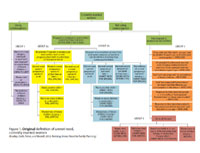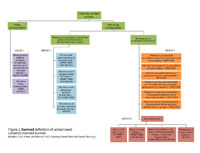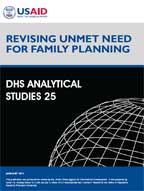- FEATURED

What is unmet need?
Unmet need for family planning is defined as the percentage of women who do not want to become pregnant but are not using contraception. Though the concept seems straightforward, the calculation is extraordinarily complex and has changed over time. To address these issues, DHS revised the definition of unmet need in 2012. Using the Revised definition:
- Unmet need is calculated the same way in all DHS surveys.
- Unmet need is calculated the same way in DHS and the Multiple Indicator Cluster Surveys (MICS).
- Unmet need can be used to reliably track trends over time and compare estimates across countries.
How does DHS collect data on unmet need?
A common misconception is that unmet need is measured simply by asking women if/when they want to become pregnant and if they are using contraception. In fact, unmet need is measured using more than 15 different survey questions. In the past, definitions of unmet need also used information from the contraceptive calendar and other questions that were not included in every survey – which led to unmet need being calculated inconsistently.
 |
 |
| Fig 1: Original definition, inconsistently applied | Fig 2: Revised definition, can be applied consistently |
The Revised definition can be applied in the same way to every DHS survey since 1990.
The history of unmet need and details of the definitions are explained in the new publication Revising Unmet Need for Family Planning.
Where can I find Revised estimates of unmet need?
Revising Unmet Need: In Brief describes the key changes to the definition of unmet need, and shows the Revised estimates for total unmet need for all DHS surveys from 1990-2010.
Revising Unmet Need for Family Planning describes the changes to the definition of unmet need in detail, and gives Revised estimates of unmet need broken down by unmet need for spacing and limiting and by background characteristics. The study also estimates total demand for family planning and the proportion of demand satisfied, and unmet need for sexually active unmarried women.
STATcompiler has been updated to show Revised estimates of unmet need.
Datasets: The revised unmet need indicator will be included in new datasets as v626a. You can calculate the Revised unmet need indicator from DHS recode files from DHS phase II onward using the Stata and SPSS programs below.
- General code for Stata and SPSS. These programs will allow you to replicate estimates of unmet need for most DHS surveys from 1990 onwards (excluding those requiring survey-specific coding).
- Survey-specific code for Stata and SPSS. These programs include survey-specific coding for 24 surveys. The list of surveys is included in the program.
